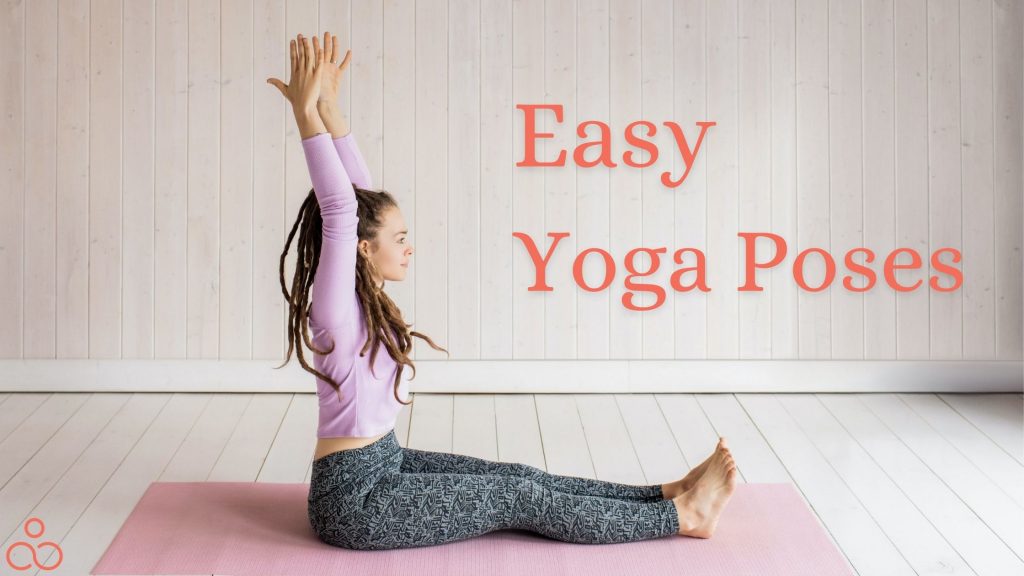Medically reviewed by Dr. Mishra
People worldwide have been adopting Yoga as a regular workout regime, and we don’t need to elaborate on the sack of benefits they reap from it. While social media pages are flooded with complex headstands and luring poses by regular Yoga practitioners and experts, it could appear very challenging for someone yet to begin their Yogic journey. Please do not panic. Here we are today with a list of Easy Yoga Poses that you could work on without the fear of injuring yourself and help you embark on your journey to health and peace.
12 Easy Yoga Poses
Yoga isn’t a race or challenge that one needs to win. Each person needs a different timeline to learn the technique and posture right. Do not push yourself to advanced postures without mastering your basics. Basic Yoga poses are easy and are more beneficial in the long run. Ask any Yoga guru or a regular practitioner how they have mastered the advanced poses, and the answer you would get to hear is that they have worked correctly on their basics. These Yoga poses listed below allow you to keep your body flexible without fearing injuries. Remember to discuss your health conditions with a medical practitioner before starting any exercise or diet regime. A study conducted on yoga practitioners with more than three months of experience to assess their core muscle functioning based on 11 Yoga poses concluded that training programs can be planned to target muscle groups with Yoga. Another study has proved that Yoga improves balance and the psychological quotient, but conclusive results and more profound studies are yet to be conducted.
- Malasana or Garland Pose – Stand straight with your feet shoulder-width apart. Join your hands and intertwine your fingers for a better grip. Slowly go down into a squat position and try not to bend forward. It is an excellent pose for hip flexors and gives a counter impact for long hours of sitting and working.
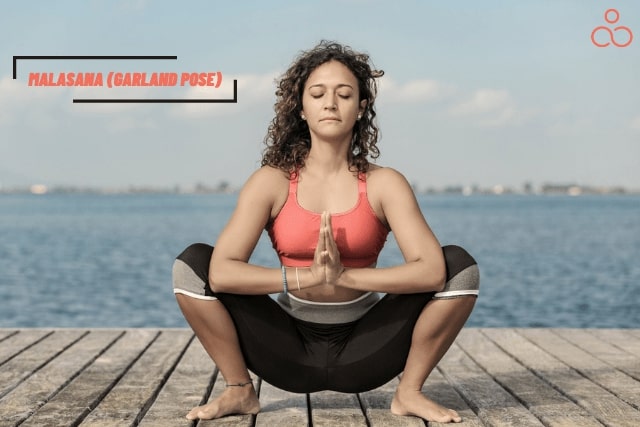
- Viparitha Karani or Legs-up-the-wall pose is a casual pose that you could do even for fun. Lie on the floor close to the wall. Raise your legs and hold them against the wall to form an L shape with your body. You might find it comfortable to place a small cushion or a pillow under your upper back for support, though it is not mandatory. This pose helps you to restore and revitalize.

- Sukhasana or Easy Pose – It is a simple seated cross-legged pose. Keep your spine straight, place your hands on your knees, and close your eyes. This pose helps you to work on your focus and concentration.
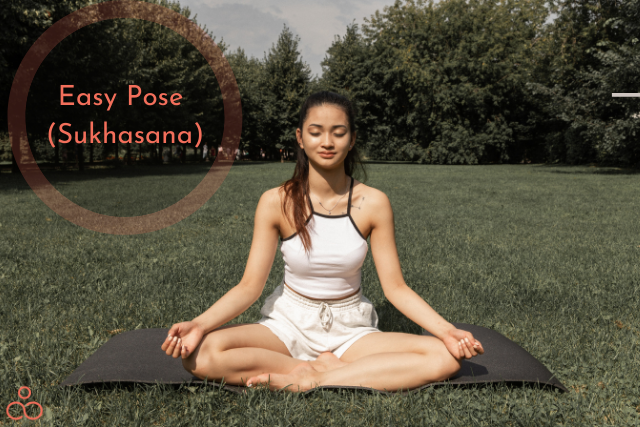
- Marjaryasana-bitilasana or The Cat-Cow-Stretch – Start on all fours and keep your spine neutral. Round your spine up towards the ceiling as you exhale and try to press your chin against your chest. As you inhale, curl down and arch your back to look up towards the ceiling. Repeat this process in cycles. Pay attention not to move so quickly, or else you might end up spraining your neck.
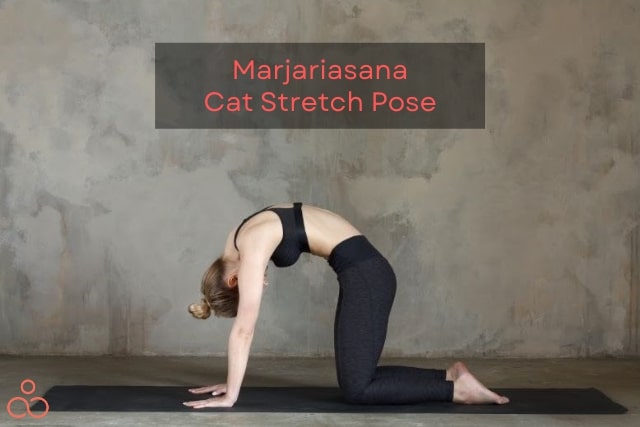
- Vrksasana or Tree Pose – Slightly complicated but still easy to achieve. This pose works on the balance, and you could do it next to a wall until you are confident. Stand straight and raise your hands over your head. Join them in the prayer position. Balance on your left knee and bend your right knee to place it on your left thigh. Hold for a couple of seconds and then repeat the process on the opposite side.
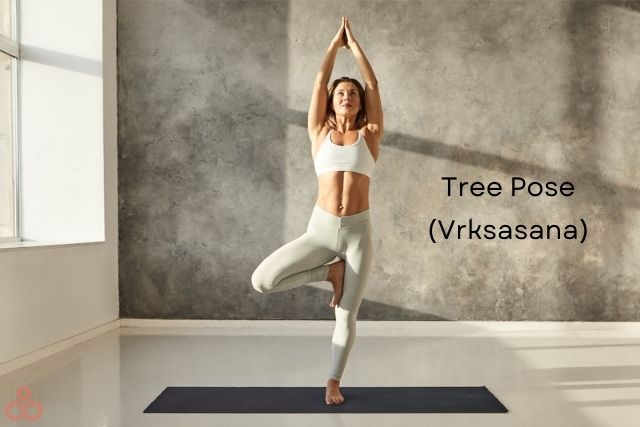
- Adho Mukha Svanasana or Downward Facing Dog – This pose helps stretch just about everything in your body. It is a famous pose and is used in sequences too. Stand on all fours with your hand’s shoulder-width apart and feet hip-width apart. Have a firm balance in your hands and feet, and try to elongate the spine into a V shape. Remember to spread your fingers to avoid wrist injuries. Initially, you might find it challenging to hold your feet to the ground as your hamstrings might be too tight.

- Balasana or Child’s Pose – Start on all fours and slightly stretch your upper body forward. Tuck your toes inside and lower the butt towards your feet, balancing on thighs. Try to touch the ground with your forehead and let the spine stretch. It is a great pose to relax your nervous system and can be tried between complex asanas.

- Tadasana or Mountain Pose – This pose looks quite simple, but there are a lot of muscle groups that would be engaged. Stand straight with your legs close to each other and position your arms at your side. Lift your arms while firmly pressing your feet in the ground. Inhale as you elongate the spine and feel the thigh muscles engage. Exhale and bring back your arms to the sides. This pose helps you find the balance and alignment to experiment with other poses.

- Virabhadrasana I or Warrior I – Start in mountain pose, and as you exhale, extend your right foot back. Now get into the lunge position with your left foot above your left knee. Align your right heel perpendicular to the left heel. Raise your arms overhead and expand your chest. It helps to strengthen your legs. It opens the hips and chest too.

- Virabhadrasana II or Warrior II – This pose is like the Warrior I pose. The variation lies in the upper portion. In this asana, you rotate your torso sidewards instead of facing forward.
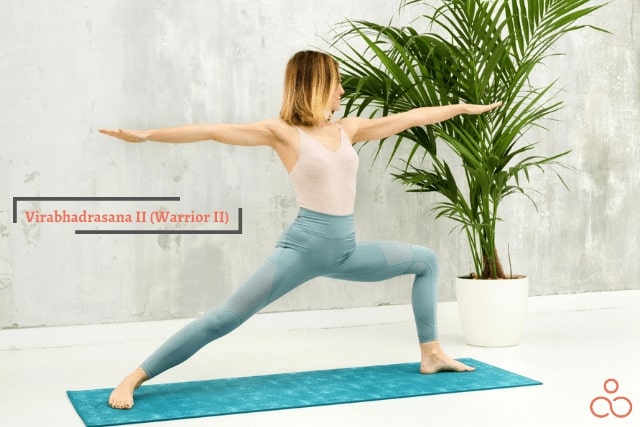
- Paschimottanasana or Seated Forward Bend – It is a seated pose to keep your legs extended forward. Inhale and then slowly bend forward as you exhale. Try to hold the feet with your hands. Try to elongate the spine a little more and bend forward with every inhale and exhale. Slowly relax. Do not worry if you can’t keep your legs straight on Day 1, keep practicing, and you will achieve it eventually.
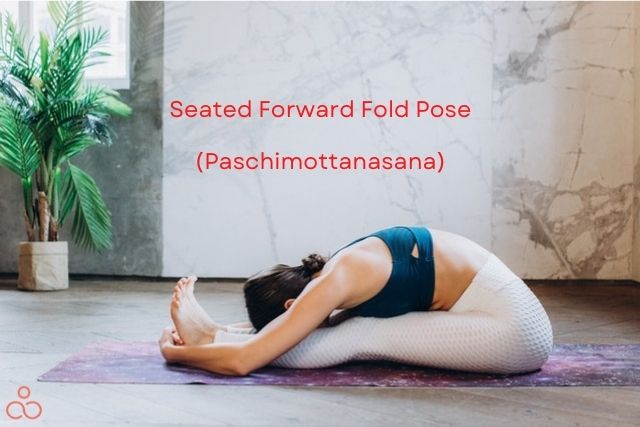
- Shavasana or Corpse Pose – This is usually the last pose to be done in any Yogic sequence. It helps your body relax and rejuvenate after all the stretching and twisting. It is yet another simple-looking asana where you lie flat on your back and let your legs and hands loose on the side. Close your eyes to relax and feel every part of your body, creating body awareness.
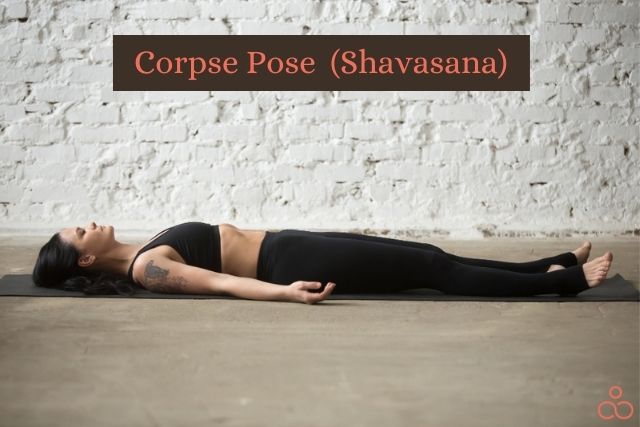
Breath is Life!
“Mano Yatra Viliyetha pavanastatra liyathe
Pavano liyathe yatra manastatra viliyathe”
The translation goes like this:
“Breathing is lessened when the mind becomes absorbed, and the mind becomes absorbed when the Prana is restrained.”
This Sanskrit shloka from Hatha Yoga Pradipika mentions the importance of breath and its effect on the mind. It means that the mind becomes absorbed when breathing lessens and the Prana (life force) is restrained. Therefore, the more you work on your breath, the longer you live. It doesn’t matter the type of breathing technique you adopt, it could be abdominal breathing, pranayama technique, or deep breathing, but breath is life.
Regulating breathing for a short period daily or even multiple times in a day could trigger a relaxing response in the body. It lowers blood pressure, improves digestion, alleviates stress, enhances energy levels, and keeps the heart healthy. The study shows that slow breathing techniques could positively affect the psychological status and the central nervous system.
FAQs
Can I do Yoga every day?
Yoga has no limitations or restrictions. Some people even practice Yoga twice a day. But as a beginner, you might need time to adjust to this technique. If you are comfortable practicing every day, you can, but do not push yourself too much. Give your body time to adjust.
How long should I practice Yoga?
Starting with a 20-minute session to a one-and-a-half-hour-long session, you could choose any time frame that fits your routine and your goals. You can opt for a 20-minute session every day or a more extended session on alternate days. But be consistent once you decide.
What is the best time for Yoga?
Yoga is best recommended during the early morning or late evenings. Early morning Yoga is a perfect choice for early risers, but if you have busy mornings and find it challenging to stay committed to the timings, opt for evenings.
Can I do Yoga when on Periods?
Yoga during periods is totally fine, but it’s dependent on how comfortable you are with it. Go for some simple twisting and stretching to stay flexible, but it’s perfectly fine to rest for a day or 2 when you are on periods.
Should I have an empty stomach before practice?
Yes, it is the best way to practice Yoga. You wouldn’t want to keep burping or feeling heavy while practicing the poses. Being on an empty stomach will help you feel light from within and focus more on your alignment and breathing.
Is Yoga safe during pregnancy?
There is a form of Yoga called prenatal Yoga, which is good and harmless during pregnancy. It helps relax the body and keep the stress at bay. Nonetheless, remember to check with your gynecologist about your medical condition and practice only under the supervision of an experienced teacher as they could guide you in the right direction.
Can kids do Yoga?
Kids can do Yoga, and they would find it fun engaging in the poses. It helps them gain strength, improve coordination, develop flexibility, and remain calm.
What should I eat or drink before my Yoga class?
Be adequately hydrated before leaving for your Yoga class. Avoid Soda or other juices. Water is the best option. Fruit before your Yoga session can be eaten. I love to have one or two bananas, to avoid cramps.
Conclusion
Many people resort to Yoga as a supportive system either to their therapy or to their lifestyle, as it brings in peace and balance. Consistent Yoga practice improves both physical and mental health conditions. This study states that Yoga has therapeutic effects on the body both at the physical and emotional level and it has also helped improve the quality of life. The more they practice, the better the awareness you gain of yourself. Let your comparisons with others take a back seat while you start your journey. Remember that even a teacher had his first day as a student.

